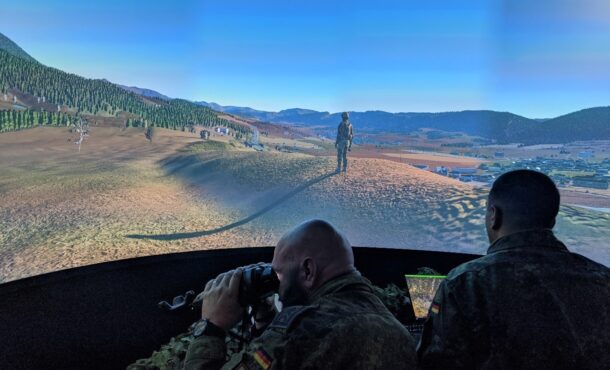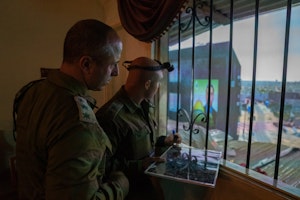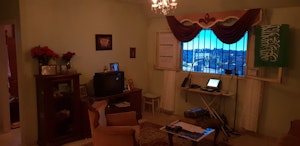As Close as it Gets to Enemy Territory
Dan Arkin for Israel DefensePublished on 12. January 2020.
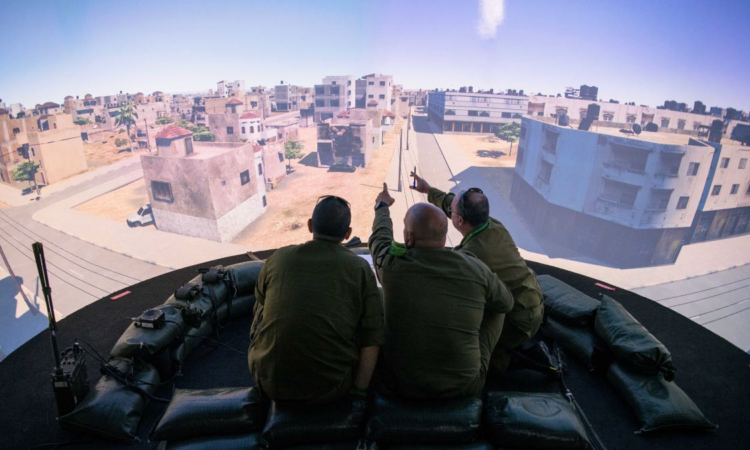
For Israel Defense, Dan Arkin
An operation in the heart of Gaza, a patrol along the Lebanese border, a West Bank roadblock, and an extrication mission from deep behind enemy lines – the simulators at the IDF Ground Training Center at the Tze’elim base prepare IDF commanders for various combat scenarios from the comfort of an air-conditioned room.
An apartment on the main street in Gaza: three bedrooms, a fully equipped kitchen, and a bathroom. Two of the beds in the apartment have Gazan newspapers on them. Through the central window, a scene of a Gazan street and residential neighborhood is visible: residential and public buildings – a school, a mosque, and even people walking up and down the street.
The only difference is the fact that this apartment is located at the Tze’elim base in southern Israel – the IDF Ground Training Center. The structure of the apartment and the walls are real, but the sights visible from the windows are virtual. The entire apartment is, in fact, one big simulator, intended for one purpose only: to train IDF commanders – at the company, battalion, and brigade level – and prepare them for the possibility that they would be required to engage in fighting inside the Gaza Strip.
As the training activity cannot be conducted on a street in Gaza, the group of commanders will come to the “apartment” at the Tze’elim base. They will occupy the apartment for a few hours or a few days, depending on their training program, and train in a manner that most closely resembles real-life conditions. The given scenario prescribes that it would be reasonable for IDF commanders entering the Gaza Strip to find an apartment that would serve them as a command post, out of which they would be able to control their forces, direct and command them, and make operational decisions.
The training session is conducted out of a control room located just behind the “apartment.” The simulator will provide the training commanders and warfighters with the experience of a status picture. Electronics will produce for them the realistic conditions of an urban area, where enemy forces are nearby, and the commander must produce a status picture.
Real Scenario, Virtual Gunfire
The “apartment” is not static. Just a few minutes after we entered it, we started hearing the sounds of gunfire and explosions. On the left side, out of the alley leading to the main street, emerged an enemy Jeep and opened fire on “IDF forces” advancing along the main street. On the right, close to the school building, mortar shells started to explode. The battalion commander or brigade commander training in the “apartment” must make decisions, give orders, and report to the force what he sees in the context of the training exercise. The commander on the ground, however, cannot see these things as the enemy force is out of sight. A report comes in of casualties, and the commander is required to make a decision as to the manner of the extrication and evacuation process.
Up to this point, everything is virtual, one of many examples of a simulator training session based on an urban warfare narrative, with the enemy out of sight and popping up suddenly. This is not an “armor vs. armor” battle in open terrain, but fierce fighting involving a slow advance and multiple risks and surprises around every corner and from every balcony and roof along the city street.
The scenarios and programs are adapted to the training units. A unit preparing for a tour of duty along the border with Lebanon will undergo a different simulator training session compared to a unit preparing to serve along the border with the Gaza Strip or in the territories.
The simulator was developed and built by Bagira Systems, which operates some 40 training simulators worldwide – about 30 of them in IDF bases, mostly at the simulator farm of the Tze’elim base. “About five or six years ago, we decided that developing training simulations for the IDF will be the primary activity of our company,” recounts Bagira Systems CEO Yaron Mizrachi. “We conducted a business analysis and decided on a product line around the core, which is a technology that would serve the training needs. We named it Digital Dust, a combination of the field and the digital world. We designed simulator applications for various needs – simulators for infantry, armored forces, artillery, employment of support fire, CBRN defense. Today we can proudly state that Bagira Systems is a world leader in the field of training simulation and our systems serve several foreign armed forces, like those of the Netherlands, Thailand, and other countries. We are a civilian company working in full cooperation and interoperability with the IDF, and adapting our developments to the training systems of the various ground elements of the IDF.”
The command group that attended the intensive training session at the “apartment” has returned safely to base, and the command group of another brigade arrived at the simulator farm in Tze’elim. This group starts its training day around the sand table. In the past, they used an actual sand model, but today the officers crowd around a digital table – the successor of the sand model, yet another development of Bagira Systems. The officers are presented with a scenario and must analyze the enemy territory: an underground tunnel with three exits here, a ditch there, an access road, a hill, a flat area. The commanders study the territory on a touch screen. Just like using a cellular telephone, they use their fingers to flatten the hill and open up the axis of advance. Now they can start planning their offensive on the ground – everything takes place around the digital table.
Ilan Dvir, manager of the simulator site at the Tze’elim base, explains: “We operate according to the demands of the IDF and the standards of every unit that comes here to train. This is how we develop the training exercise and outline the scenarios, and the exercise must be realistic. I am a part of the exercise and develop the simulative support to simulate the reality for the trainees. The simulator training exercises must provide a realistic synergy of the three elements – intelligence, fire, and maneuvering.”
Dvir adds that most of the training elements are at the brigade and battalion levels and that the training sessions involve tactical and micro-tactical operations and aspire for the prevailing objective among the ground elements – lethality. “The simulator exercise will simulate a realistic situation where we get the IDF system to perform at its best, to disrupt and neutralize the enemy and his fighting force, so that he cannot execute his plans – that is the mission on the ground and on the simulator,” says Dvir.
Amir Granot, head of Bagira Systems’ Intelligence & Training Division, explains the principles of simulator training: “There is a virtual enemy opposite whom I produce a scenario relying on a database. It is a combination of training on the ground and training on the simulator, and the trainee experiences all of the stages and activities, including the debriefing after the training session. Everything is documented and recorded, and the training session may be replayed – ‘learn from your mistakes and do it again.'”
“A battalion commander will arrive with his staff, and for four hours, they would practice the employment of support fire. They can see, feel, and deal with simulations of live fire, tanks, explosions, and guns firing. For other training forces, we prepare urban warfare spaces such as the ‘apartment,’ tunnels, and snipers firing out of windows or from roofs. The commander experiences all of that and has to plan the activity of his force that advances through the city streets. How will you operate? What will you do? What are your forces doing in the crowded and smoky urban space? The simulator is dynamic and responsive,” says Granot.
Maj. Mordechai Simon, head of the Support Fire Employment Simulator Section at the Ground Training Center, is the officer in charge of the simulator farm at the Tze’elim base. “The majority of the training activities using simulators is devoted to the brigade level and lower levels, mainly on the subject of employing support fire,” he says. “That is where we aim our training platform. We operate the support fire assets of the battalion and practice the levels of cooperation between the battalion and brigade command posts. The simulator senses the performance levels and decision-making patterns, and the trainees can learn from their mistakes and correct them. We also produce extreme scenarios, like a mass-casualty event during the activity of the force.”
From Range Shooting to Helicopter Direction
The applications of simulators are numerous and diversified and are not confined only to fighting forces. The security force of the Kirya base in Tel-Aviv, which contains the IDF General Staff, held a simulator training session for specific needs; commanders and troopers preparing for a tour of duty at the roadblocks in the Judea and Samaria district use a checkpoint simulation, and there is also a simulator of a firing range.
The spacious simulator installation at the Tze’elim base enables simultaneous training of a complete unit, including individual training, team training, and commander training. An artillery liaison officer and a forward artillery observer will come to the simulator installation in Tze’elim together for a joint training session on the simulator, each one for his own specialized knowledge and personal performance level. The state-of-the-art electronic simulators offer high levels of precision. The simulation is identical to reality, and savings are substantial for any profile – whether it consists of flight hours or tank engine hours, artillery shells, ammunition for small arms range fire, or the launching of UAVs. The IDF regards these financial savings as priceless.
We observed the training session of a brigade fire support commander – the officer in charge of employment the support fire for the brigade. The officer sat opposite display screens, on which the backroom instructors presented the territory where he would operate and placed resources at his disposal: artillery pieces, UAVs, and so forth. He was in contact with his battalion commander and they conducted the combat operations according to the scenario presented to them. The session included a simulated enemy force they had to deal with, simulated mortar and gunfire – all presented on the display screens. The commander can communicate with an air support officer to call in air support and even communicate with the pilot. He sees the enemy force advancing toward his own force on the screen, and can direct the pilot of the attack helicopter to provide support.
Sensing the Enemy Territory
One of the simulators has a dome-shaped workstation that simulates friendly forces operating in enemy territory. The simulator provides the trainees with an understanding of the space and all of the details therein – a mosque and a cemetery here, hiding places or potential firing positions, a tangled bush over there, where an enemy detachment may find cover. In this way, a commander can “sense” the territory and spot any item that might be present there an enemy force, or a terrorist detachment that might threaten his warfighters and delay the operation.
Another simulator offers a training scenario for dealing with the threat of an abduction of a soldier. The training resources include a real-life recording of an abduction, which the trainees actually listen to. The trainees watch a video clip whose ‘hero’ is an Arab (played by an actor), who explains to the IDF soldiers, in a rather frightening but realistic way, what would happen to them if they encountered a terrorist. Other clips presented to the trainees include information on coping with knife attacks while on roadblock duty, and how to deal with the Israeli and foreign media when warfighters enter a combat zone. Other simulations simulate medical situations, such as the evacuation of casualties on the battlefield.
Bagira Systems currently erects in Tze’elim an extensive simulator compound, and the construction operations are already underway. The new compound will include simulators for artillery, armored forces, infantry, and various command levels – all of the simulators will be concentrated in a single site within the Ground Training Center in Tze’elim. The building is scheduled to start operating in about a year and a half and would serve all IDF units, both regular and reserve.
The executives of Bagira Systems commend the productive and in-depth cooperation between the company and the IDF. Company specialists are on duty regularly at the bases, and according to CEO Yaron Mizrachi, his company is in contact with the developers of weapon systems for the IDF. “We are a part of the IDF long-term program. We maintain on-going, close contacts with the IDF command and with the elements that develop the combat doctrines, as we would be called upon to develop simulations for the future training programs,” he says.
Between Gaming and the Battlefield
Mizrachi said that each year, some 150,000 IDF soldiers train on his company’s simulators. In addition to the sizable simulator farm in Tze’elim, the company operates a simulator installation for the IDF Northern Command in Elyakim. “I provide my clients with the preparedness of the trainee for war,” says the CEO. “It is a simulator for military needs. For many youngsters using the simulator, it looks like something from the world of gaming, but the mission is to train warfighters and commanders. Our simulators use Artificial Intelligence (AI) to create the perfect image. We sometimes have to simulate a radar system, a camera, or an infrared (IR) sensor, and the simulation must be identical to the real system. The product must be identical to whatever the trainee sees in reality.”
There is also a vision for the future: “We dream about the establishment of central servers that would collect all of the IDF data we require in order to outline the simulator training programs. This is a major Big Data effort that would concentrate all of the training data through an online, interconnected systemic deployment,” Mizrachi said.
The people at Bagira Systems keep abreast of current developments and know that the simulation industry is growing. Weapon systems are becoming increasingly more costly; training areas are becoming increasingly smaller; training periods must be shortened for financial reasons, and the allocation of reserve duty days must be kept to a minimum. While in the past, a typical reservist would be summoned for four days of reserve duty, today he would be summoned for a single day only, and periodically, once every few service periods, he will spend that single day training on the simulator.
The threats faced by today’s armed forces, and the IDF in particular, are becoming increasingly severe and sophisticated. Simulator systems should be developed and produced that possess such capabilities as target identification, simulation of UAVs, and the ability to identify enemy elements on the move and in hiding that pop up without warning. Simulation systems are becoming more sophisticated, so there is no wonder that in many military organizations worldwide, the training activity currently consists of 80% simulator training and only 20% training on the ground.
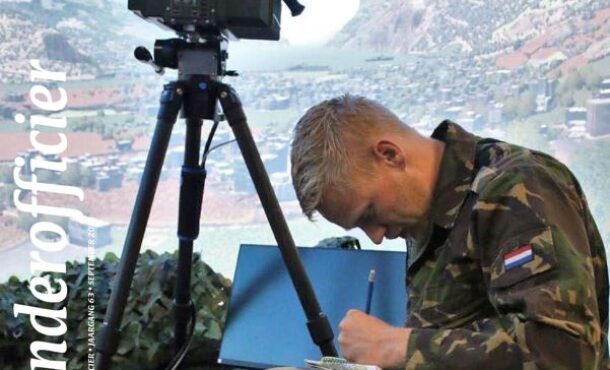
In-depth article: JFTES revolutionized the training of Dutch army Fire Support Teams
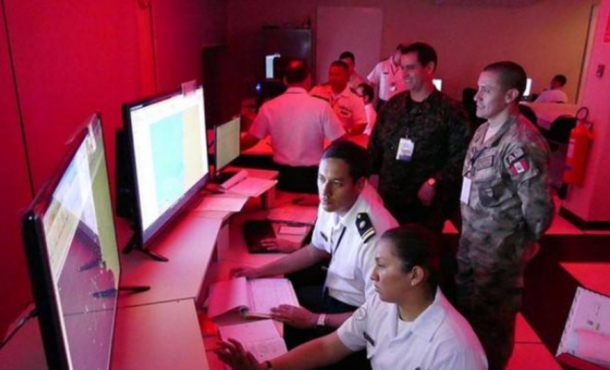
Agreement Between the Ministry of Defense of Peru and MTU to Modernize the Naval Tactical Training Center and the X-39 Workshop of SIMA
